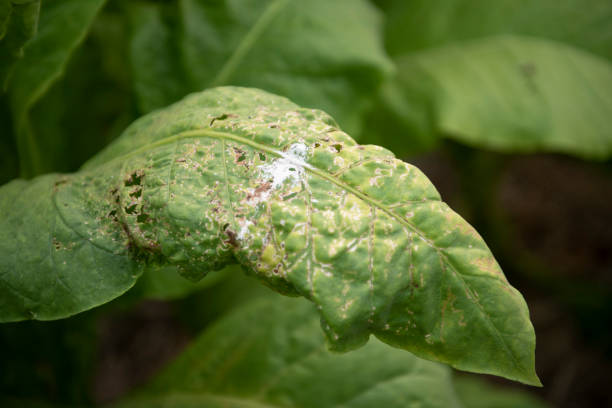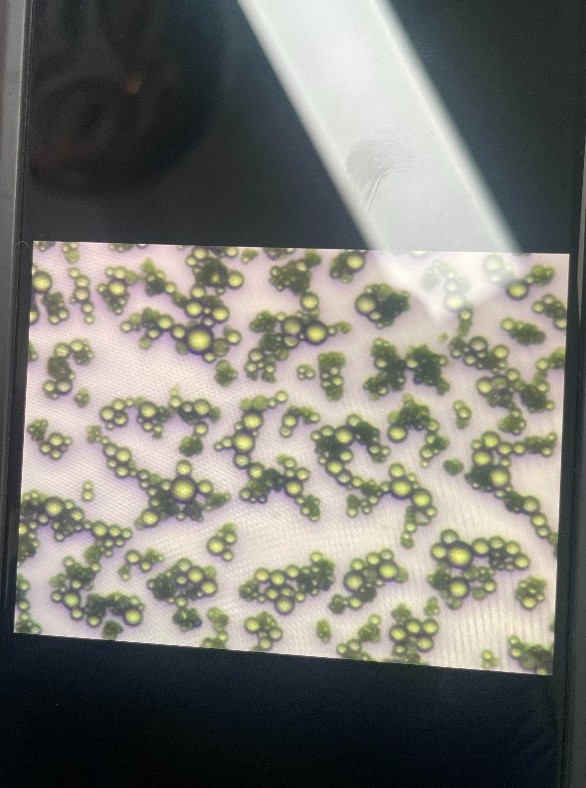
Mosaic disease
Mosaic disease is a common and serious disease that affects many crops, especially cassava, soybeans, tomatoes, peppers and many other crops. Mosaic disease causes poor plant growth, reduces productivity and affects the quality of agricultural products. This is a disease caused by a virus and can spread rapidly, causing great economic losses to farmers.
In this article, we will learn about the causes, symptoms, effects and measures to prevent mosaic disease on crops to effectively protect crops.

1. Causes of mosaic disease

Mosaic disease on crops is mainly caused by a number of viruses, the most common of which are cassava mosaic virus, soybean mosaic virus, tobacco mosaic virus and tomato mosaic virus. These viruses are spread by insects, mainly whiteflies and aphids. When insects suck the sap of infected plants, the virus will enter healthy plants through their salivary glands.
Warm, humid weather conditions and the presence of disease-carrying insects are favorable factors for the spread of mosaic disease. In addition, the use of infected seedlings is also an important cause of the rapid spread of the disease over a large area.
2. Symptoms of mosaic disease
The symptoms of mosaic disease are quite typical and easy to recognize, but can vary depending on the type of plant and the level of infection. Below are common signs of mosaic disease:
2.1. Symptoms on leaves
- Leaves with yellow, mottled streaks: Leaves with mosaic disease often have uneven yellow, green streaks, forming mottled patches on the leaves. These streaks alternate between green areas of the leaves, creating a characteristic "mosaic" phenomenon.
- Twisted and deformed leaves: Leaves of plants with mosaic disease are often smaller, with irregularly folded and twisted edges. Leaves may be thickened, deformed, and more brittle than healthy leaves.
- Wilted and early falling leaves: When the disease progresses, leaves may wilt and fall early, reducing leaf area and affecting the plant's ability to photosynthesize.
2.2. Symptoms on stems and fruits
- Stunted stems: Plants with the disease often grow slowly, have weak stems, are short, and appear stunted, and lose vitality.
- Small, deformed fruits: In fruit-bearing plants such as tomatoes, peppers, and squash, mosaic disease can affect fruit development, causing small, deformed, and unmarketable fruits.
3. Harmful effects of mosaic disease

Mosaic disease causes serious damage to crops, especially in high-value crops. Some of the main harmful effects of mosaic disease include:
- Reduced productivity and quality of agricultural products: Mosaic disease causes plants to grow poorly, leaves and fruits to be deformed, reducing productivity and product quality. For fruit-bearing plants, mosaic disease causes small, deformed fruits that do not meet commercial standards.
- Causing crop failure: In case the disease spreads strongly, the crop can be completely lost, especially in crops such as cassava, soybeans and tomatoes.
- Spreading over a large area: Mosaic disease can spread rapidly through disease-carrying insects and infected seedlings. When not controlled, the disease can spread over a large area and affect the entire production area.
4. Conditions for mosaic disease occurrence
Mosaic disease often occurs in the following conditions:
- Warm weather, high humidity: Warm weather conditions and high humidity are favorable environments for the development of whiteflies and aphids, which are insects that transmit mosaic disease.
- High insect density: When the density of whiteflies and aphids increases, the ability of mosaic disease to spread also increases rapidly.
- Infected seedlings: Using virus-infected seedlings from the beginning of the season is one of the reasons why mosaic disease breaks out and spreads strongly.
5. Measures to prevent and control mosaic disease

Prevention and control of mosaic disease requires a combination of many measures, including managing disease-carrying insects, using disease-free seeds and proper plant care. Below are effective measures to prevent mosaic disease:
5.1. Management of disease-carrying insects
- Monitoring insect density: Regularly check and monitor the density of whiteflies and aphids in the garden to detect and control insects early.
- Spraying insecticides: Use highly effective pesticides to kill disease-carrying insects, preventing them from spreading the virus from infected plants to healthy plants. Pesticides containing active ingredients such as Imidacloprid and Buprofezin can help control whiteflies and aphids well. Medicines containing active ingredients such as VUA IMIDA, Suparep 300WP
- Biological measures: Use natural enemies of whiteflies and aphids, such as ladybugs or parasitic wasps, to control insect populations naturally and safely.
5.2. Use disease-free plant varieties
- Select disease-free plant varieties: Before planting, it is necessary to check and select disease-free plant varieties to ensure that they do not carry mosaic disease pathogens. Using disease-free plant varieties is an important measure to help limit the spread of the disease right from the beginning of the crop season.
- Select disease-resistant varieties: For some crops, it is possible to select mosaic-resistant plant varieties or those that are resistant to the disease.
5.3. Cultivation measures
- Garden sanitation: After each crop season, it is necessary to collect and destroy diseased crop residues to eliminate the source of the disease. Regularly clean and remove weeds and intermediate host plants of whiteflies and aphids.
- Crop rotation: Rotate with plants that are not host plants of mosaic disease to reduce disease pressure and disease-carrying insects.
5.4. Plant protection measures
- Periodic preventive spraying: Periodic spraying of preventive pesticides to prevent the spread of disease-carrying insects. Pesticides should be used in the correct dosage and at the right time to achieve the highest efficiency.
- Maintain healthy crops: Adequate fertilization and proper care of crops help plants stay healthy and increase their resistance to disease.
6. Conclusion

Mosaic disease is one of the most dangerous and difficult-to-control diseases of crops, causing great damage to farmers. However, if effective prevention and management measures such as controlling disease-carrying insects, using disease-free seeds and implementing appropriate farming practices are applied, mosaic disease can be completely controlled.
Monitoring and detecting the disease early, applying timely treatment measures will help growers maintain crop yield and quality, protect crops and increase sustainable income.
Bình luận
Những bình luận mới nhất



